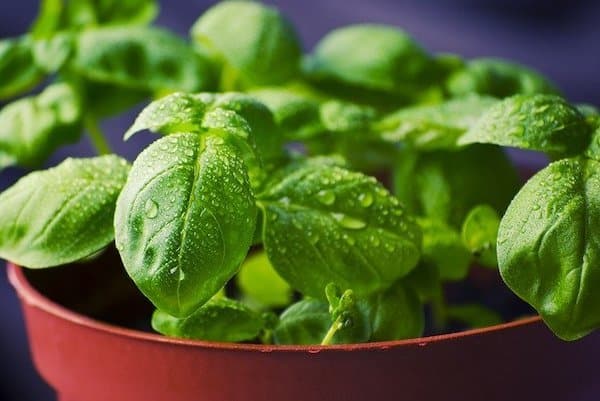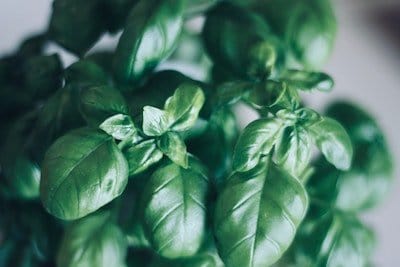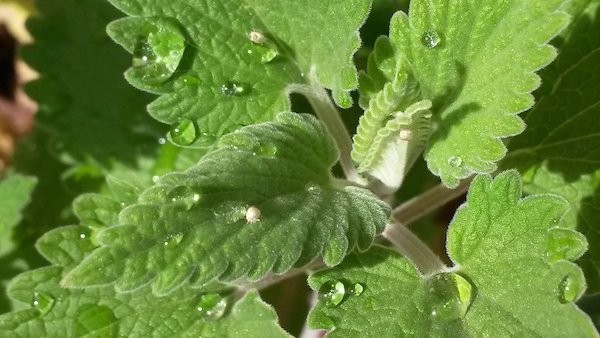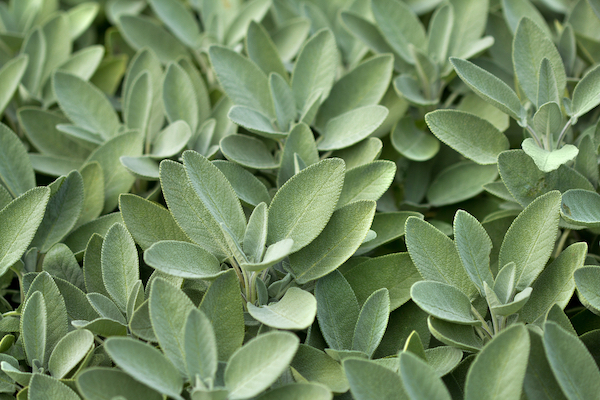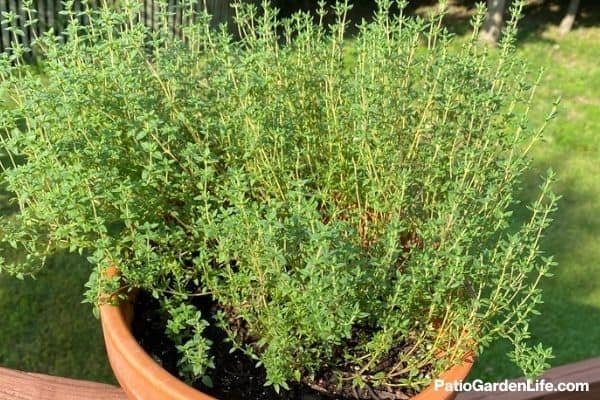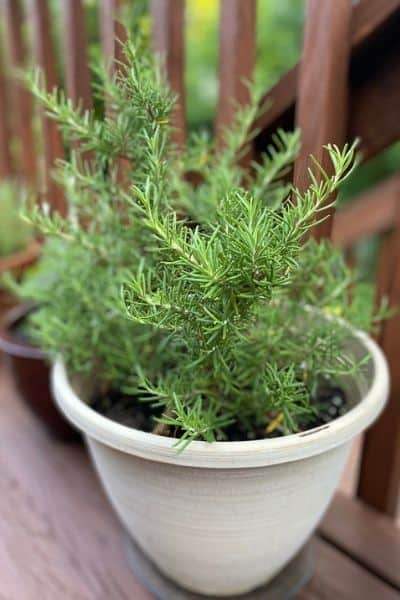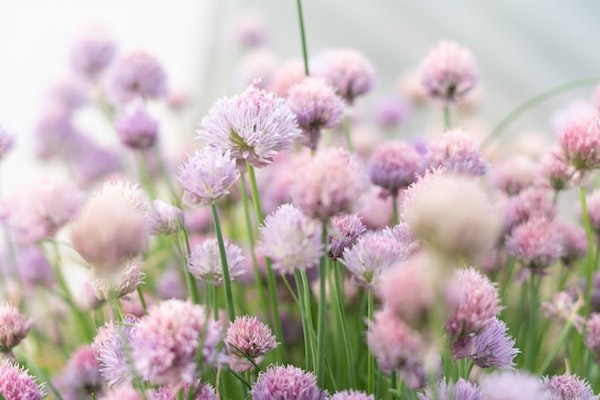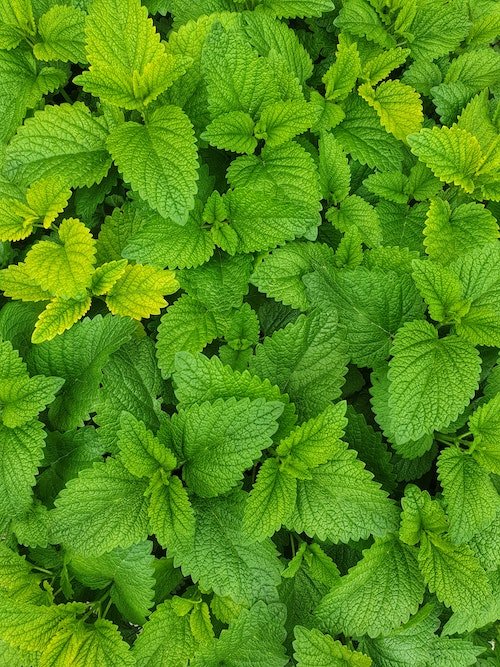How to grow basil in a pot
A step-by-step guide to growing basil in pots on your patio or deck
Basil was one of the first herbs I learned to grow in my backyard garden and then in containers on the deck. Now it’s a yearly staple in my lineup of herbs and veggies. It’s one of the best and most versatile herbs for cooking, and it smells amazing.
And best of all, basil grows very well in pots – perfect for a deck or patio herb garden!
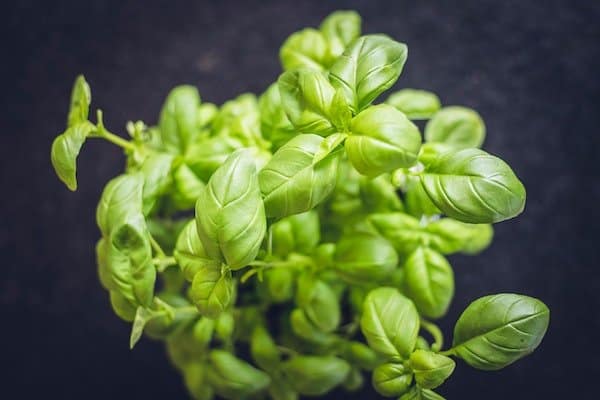
With some attention and effort, you’ll have fresh basil on hand to make pesto, throw in pasta sauce or soup, or top pizza. Or you can easily dry and store it for year-round use.
You’ll see below that basil isn’t hard to grow, but it can be finicky about conditions like sun, water, and temperature.
It’s not something you can plop in a pot and leave more or less to its own devices. (If you want something like that, check out rosemary …)
This post may contain affiliate links. If you buy something through these links, we may earn a small commission at no cost to you.
How to plant basil in a pot
Growing basil from seed
Starting plants from seed can seem intimidating if you haven’t done it before, but basil is an easy one to try.
- First, about 4-6 weeks before the last expected frost in your area, plant 5-6 basil seeds per pot or sprinkle some in a seed starter kit.
- Use seed-starting mix, coconut coir, or potting soil, and mist it to keep it slightly moist but not soggy.
- After they’re planted, seeds should germinate in about a week.
- Once they have a set of true leaves (not the first little seedling leaves), thin them down to one or two seedlings per pot.
Or you can buy seedlings from a local farmers’ market, nursery or garden store.
This is faster and easier than starting from seed, of course, and you can often find strong, healthy seedlings that are several weeks ahead of freshly planted seeds.
TIP: I’ve had the best luck finding good seedlings at the farmer’s market, where they’re often grown organically and get a lot of care and attention. Plus you can talk directly to the grower, who can give you details about the variety, whether it’s been hardened off, tips for transplanting and growing in your local climate, etc. … and pick up some other locally grown goodies while you’re there! Farmer’s markets rock. Find yours!
It’s important to remember that if you go with seedlings and they haven’t been hardened off (or you’re not sure they have been), gradually expose them to the outdoors before planting in your containers.
You can do this by setting them out in indirect sunlight for an hour or two per day for a few days. Then add a bit more time and direct sunlight each day until they’re outside all day.
TIP: Basil is very sensitive to cold temperatures, so keep it indoors or wait to buy seedlings until a couple of weeks after the last expected frost.
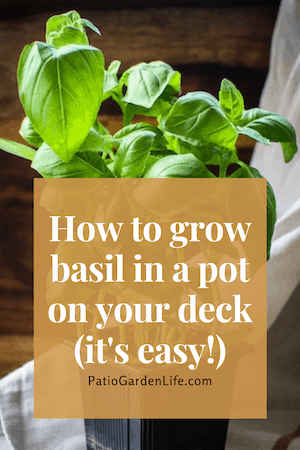
What variety of basil does best in pots in a small space?
Most basil varieties do well in pots and containers, as long as their sun and water needs are met.
The most common variety for cooking is sweet basil (also known as Genovese), which does very well in containers. It’s a safe bet if you want that classic basil flavor.
Some of the other types you see are varietals of sweet basil, with slightly different flavors. For example:
- Thai basil has licorice undertones that work well in curries, pho and other Asian recipes.
- Cinnamon has hints of … well … cinnamon, which is great for tea.
- Lemon basil is a popular hybrid with a strong citrus scent and flavor that’s perfect for vinaigrettes or fish.
So basically you can’t go wrong. If you’re just starting out, I recommend getting 1-2 sweet basil plants and another 1-2 to try out different varieties.
What size pot should I use for basil and how much sun does basil need?
Basil is a tropical plant, native to Africa and Southeast Asia. That means:
Basil likes: heat, staying watered, room to grow
Basil does not like: cold temperatures, dry soil, being ignored, being crowded. (Same here!)
These are all key factors when deciding where and how you’re going to plant:
- Fill a 10-12” deep pot or container with good quality potting soil for each plant. Basil needs room to grow roots, and it doesn’t like to be crowded. So resist the temptation to use a smaller pot or double up in one, even a deep one. Your basil will protest by producing less.
- Next, find a spot on your patio, deck or balcony that gets full sun at least 6-8 hours per day, if possible. If you’re in a very hot climate and the spot gets full sun, move your basil into the shade for a bit each day to give them a break.
How to take care of a potted basil plant
Water basil regularly, every other day or as soon as the surface of the soil feels dry.
Pots and containers lose moisture faster than a garden bed, so keep at it. An inch or two of mulch on top of the soil can help keep the moisture level consistent. A plastic tray under the pot helps as well.
Fertilize basil in a pot with a little compost or organic fertilizer every month or so.
Try a water-soluble fertilizer at half strength – basil doesn’t need to be heavily fertilized.
Pinch and prune! Do it!
One of the most important steps to getting a full, bushy, productive plant is to pinch back the center stems and flower buds.
I’ve made this mistake before – not pinching enough or starting too late – and it’s so disappointing to watch your beautiful vibrant basil stretch out and bloom as the leaves wither away, right along with your green thumb.
TIP: The minute you see a flower bud appear, pinch or snip it off. Have no mercy! This means the plant is starting to bolt (go to seed), and it pulls all the nutrients and energy away from the leaves.
Here’s how to pinch back your basil:
How much basil should I grow?
Some patio gardens have a (relative) ton of space and can handle a lot of containers. Others only have room for a pot or two, and you probably have other herbs or vegetables in mind as well.
If you’re planning to use it fresh and/or have limited space:
Two plants are probably enough. Of course, stay on top of pinching to make sure you’re getting the most bang for your buck.
If you’re using fresh basil but cook in large quantities OR you want to have a little left over at the end of the season to preserve:
In this case, plant three or more. If you do have leftovers, there are a ton of good ways to preserve it.
If you want to use it fresh AND make pesto or preserve it, or if you want to try out different varieties:
Aim for at least four or five plants, if you have the space.
When to pick basil leaves
You can start harvesting leaves as soon as the plant looks like it can spare some, when it’s maybe 6” tall or so.
Start by picking from the top and be sure to clip or pinch from just above the next set of leaves — that encourages bushy growth.
At the end of the season, cut the whole plant down close to the ground and pick off all the leaves. Throw away any with spots or discoloration.
Then get busy cooking and preserving!

In short, basil is so versatile and can grow and thrive in pots and containers with some care and planning. The steps above should give you a great start.
You’ll thank yourself for the effort when you have a bowl of pasta with pesto made from fresh basil steaming in your hands …
Building a container herb garden? Here are more how-to articles to help you out:
- How to grow oregano in a pot
- How to grow thyme in a pot
- How to grow rosemary in a pot
- How to grow dill in a pot

